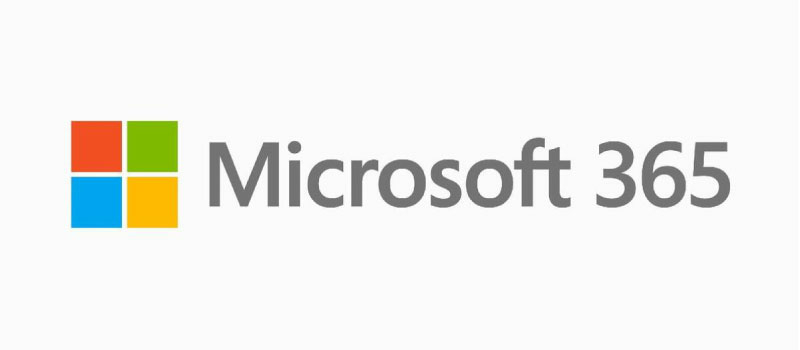When most people think of Office 365, the first thing that comes is the Microsoft Productive Suite (Word, Excel, PowerPoint, etc.) and maybe a couple other Out of Box (OOB) apps like Microsoft Teams and SharePoint Online.
However, Office 365 is teeming with under utilized solutions and features that can really up your collaboration and productivity game.
COVID-19 has created the perfect opportunity to prioritize client/employee engagement, productivity, and security. When the pandemic first hit, organizations scrambled to make the shift to remote work. There was an immediate need to find applications that provided secure collaboration and productivity away from the office. As an example, many business were searching for a simple and secure collaboration and video conferencing solution.
Many organizations found their answer in MS Teams, which is evident in the exponential rise in Teams adoption, which went up from 44 million daily users to 75 million daily users between March and April 2020 (Statista, 2020). Microsoft Teams proved to be a very useful solution that many people had access to yet were not fully using.
Office 365 can check a variety of boxes for organizations when it comes to collaboration and productivity. In this blog, we explore some of the lesser known Office 365 features that will provide immediate benefits for your business.
Microsoft Forms
Information gathering through surveys is a critical part of understanding both client and employee needs and preferences. Customer satisfaction surveys are proven to increase client engagement by differentiating your brand and showing that you care. Similarly, employee surveys are key to measuring engagement internally within organizations. This points to the need for strong tools that effectively report survey/poll responses in a measurable way so that the findings can facilitate decision-making. This is where MS Forms comes in. With an easy to use interface, Forms allows you to create short polls or elaborate surveys for free as a part of the Office 365 applications suite. While there are other third-party alternatives, like SurveyMonkey, that have survey and polling capabilities, Forms is free as part of the Office 365 subscription. The benefit of Forms is that it offers more fluid integration with other Microsoft applications. In the past, Microsoft had InfoPath, which served the same purpose but was more complex to design and get started.
One of the features of Forms that is worth noting is Dynamic 365 Customer Voice. It’s an enterprise feedback management application built in Forms that allows easy tracking of customer metrics by feeding real time survey data into customer records. It comes with project management capabilities allowing you to collate multiple surveys with similar metrics to simplify analysis, so you can understand how clients view your services. Note: You will require a paid license to access the Dynamic 365 Customer Voice feature, however it is available for a 30 day free trial.
From an executive standpoint, Forms allows business leaders to understand employee needs and productivity quickly and efficiently. An example, ITW’s senior leadership team has been using Forms to check in with employees during the pandemic. It has been invaluable in providing insights and metrics on productivity, well-being, and assessing remote work needs of employees (e.g. need for office equipment and stationery). Forms allows any device to connect and contribute to an ongoing survey live, with the results being seen dynamically on the backend, so employees are able to answer polls during a company wide virtual meeting. The leadership team can then view these responses as they come in and address them live, which creates a more conversational feel even in a remote setting.
Microsoft Planner
Productivity tracking and task management are integral to cross-team organizational alignment; a work environment where employees feel connected while working on projects is proven to increase engagement and productivity. Microsoft Planner is a complete solution for task and work management that allows teams to stay connected throughout a project timeline, manage their time, and get more organized. Planner lets you set up due date notifications so that team members are given reminders on when things are due, which maintains connectivity and increases accountability on the tasks. Additionally, one of the newer features in Planner lets you announce tasks in Teams so that users can discuss them among the Team channel.
Other applications like Monday.com or Smartsheet can provide similar functionality, but being a part of the Microsoft 365 suite, Planner can easily be integrated with other apps on the platform. And of course, the value that you get from a free application in Planner far outweighs the cost of paying for any third-party application.
Security & Compliance Center
Microsoft’s approach to Security & Compliance is a collaborative one – where you are responsible for the security of your data, users, and devices, while Microsoft secures the Office 365 services that you use. Office 365 has a ton of security features that can help you keep your data and users secure, but many of them are not automatically turned on. Deciding which features to enable, and how, can be a tricky process and can leave you vulnerable to security risks if not performed correctly. Thankfully, Microsoft has designed the Security & Compliance Center as part of the Office 365 offering which can make the process a bit simpler.
With the Security & Compliance Center, Microsoft gives you:
- A built-in “Secure Score” – When you sign up for Office 365, you are given a Secure Score that acts as a measure of your organization’s security posture. The score provides configuration recommendations that can protect your environment without negatively affecting the productivity of your users.
- Security Reports – With security reports like Azure AD reports, Email Security Reports, and Microsoft 365 Advanced Threat Protection reports – among many others – you get a detailed overview of your organization’s security activity. This might include reports on suspicious sign-ins, compromised users, or malicious files detected on your system.
- Policies & Permissions (Security Center) – In the Security Center, you can set up policies to manage devices or mitigate threats, as well as control permissions for who has access to view confidential info and perform security related tasks.
These are just a few of the features you get with the Security & Compliance Center that can give you an understanding of the state of your security posture. And while this is all helpful info, it is a lot to take on when you are focusing on business innovation and client satisfaction. To really ensure you are using these features to their maximum potential, you should consider adding a Microsoft expert to your team.
Conclusion
The Office 365 features listed above can significantly increase the collaboration and productivity of your organization. Microsoft has taken great strides in catching up and surpassing many of the big players in this market like Slack and Monday.com, and the integration capabilities you get between OOB apps and other Microsoft programs (e.g. MS Office) really are unmatched. Additionally, there are many cost benefits of these applications which are free as part of the Office 365 subscription, allowing you to control costs during a time of financial uncertainty.
Did you know Microsoft guarantees security of their data centers but not your data? You need a solution that can ensure security of your data in Microsoft’s Cloud – Check out our Office 365 Security & Protection solution and get peace of mind knowing your data and users are safe.




